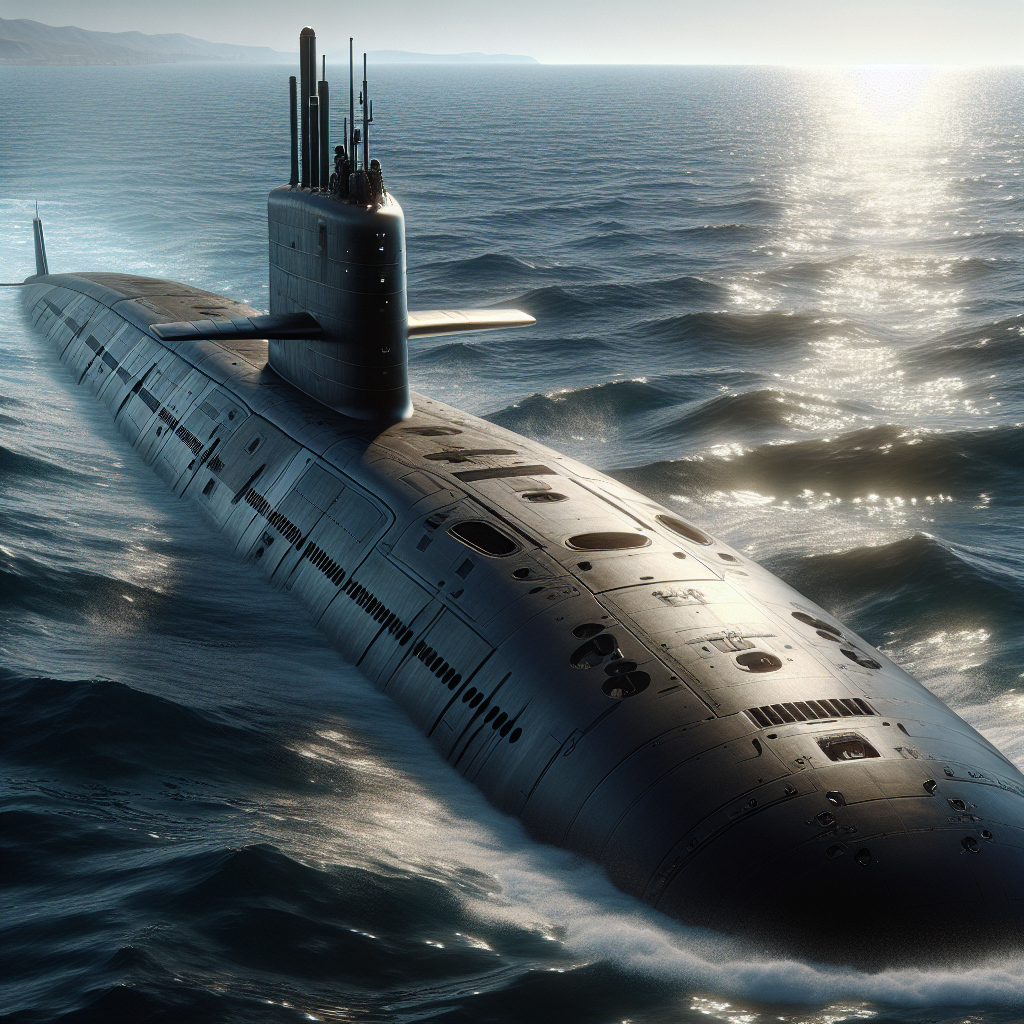The “USS Jimmy Carter” (USS Jimmy Carter) is the last Seawolf-class submarine in the United States, representing the pinnacle of the US Navy’s underwater combat capabilities. This submarine is renowned for its stealth, speed, and firepower, playing a crucial role in US military operations in the Pacific, especially in countering the expansion of the Chinese navy.
The nuclear-powered attack submarine has a unique 100-foot hull extension which allows it to carry out advanced missions, deploy Navy SEAL teams, operate unmanned underwater vehicles, and conduct intelligence operations. Currently undergoing maintenance, the “USS Jimmy Carter” will soon return to service, carrying out surveillance, special operations, and potential strike missions to deter China.
The Jimmy Carter is the third and final submarine of the Seawolf class, production of which began in 1996 when the Electric Boat Division of General Dynamics in Groton, Connecticut was awarded the production contract. The keel was laid in 1998, and the submarine entered service in 2005.
Costing over $3.5 billion, the Jimmy Carter is an expensive submarine.
The submarine’s design is notable for its ability to execute various missions through the Ocean Interface section of the hull, providing an additional 100 feet of space for equipment capable of multiple operations, essentially serving as an underwater hangar.
This allows the Jimmy Carter to control underwater remotely operated vehicles and provide more space for deploying advanced Navy SEAL teams and their equipment.
The Jimmy Carter is the only submarine that has been modified to carry out underwater warfare missions, enabling it to conduct deep-sea operations such as targeting critical infrastructure like power cables, telecommunications cables, and even natural resource extraction systems.
Only a few countries have the capability to conduct such operations, requiring submarines like the Jimmy Carter to fulfill missions.
The US Navy’s Block VI of the Virginia-class submarines is expected to utilize underwater warfare equipment, and Russia’s Losharik submarine is believed to have similar capabilities.
The Jimmy Carter can deploy up to 50 special operations personnel at sea.
The Seawolf-class submarines entered service with the first USS Seawolf in 1997. Equipped with eight torpedo tubes in the torpedo room capable of deploying up to 50 weapons, including Tomahawk cruise missiles and heavyweight torpedoes.
The Seawolf-class submarines feature a strengthened sail that allows operations under polar ice caps, boasting the fastest speed among US submarines. Furthermore, the design focuses on reducing noise, making them 70 times quieter than the first Los Angeles-class submarines and 10 times quieter than the improved Los Angeles-class submarines.
Seawolf-class submarines are capable of collecting intelligence, surveillance, and reconnaissance data underwater. Due to their role as spy vessels, most of their capabilities are classified, with Navy leadership often discussing these submarines using vague terms like “deterrence” and “flexibility.”
The Jimmy Carter submarine is larger and more advanced than the other two Seawolf-class submarines, likely undertaking some of the US Navy’s most secretive missions. Therefore, the specific types of missions carried out by this submarine in the past 18 years remain classified, but it has received combat effectiveness awards and Presidential Unit Citations, indicating it has executed important and potentially dangerous missions.
The public may never know the missions this submarine has been involved in, but it is noteworthy that the motto of the Jimmy Carter submarine is “Semper Optima” (Always the Best).
General Dynamics describes the Seawolf class as “the fastest, quietest, and most heavily armed submarines in the world.”
This fast-attack submarine is equipped with advanced electronic equipment, including a 24-foot diameter spherical sonar array mounted on the bow, flank sonar arrays on the sides, and recently added towed array sonar.
All three Seawolf-class submarines are designed modularly, allowing for upgrades in the future, including weapon development and improved sonar systems, which even today remain somewhat “future-oriented”.
The company explains the differences between the Jimmy Carter submarine and other submarines of its kind. “This $887 million modification project involves modifications to the basic design of the Seawolf-class submarine in terms of pressure hull control, mission management space, and various services. A unique feature of this modification is the creation of a flexible Ocean Interface technology, known as the ‘wasp waist,’ which allows the Navy to deploy and recover various effective payloads without using torpedo tubes.”
According to the “National Interest” website, once maintenance is completed, the Jimmy Carter will set sail to conduct surveillance missions against enemy ships. Being based in the Pacific, it is conceivable that this submarine will be active in East Asia, patrolling the East China Sea, South China Sea, and the Taiwan Strait to ensure that Chinese aircraft carriers, escort ships, and destroyers cannot launch any attacks on Taiwan.
The Jimmy Carter is also ready to deploy Navy SEAL teams at any time or launch cruise missiles at land targets.
One major advantage of the Jimmy Carter submarine is its multi-mission capability. It is fast, highly stealthy, and an essential component of Navy special operations and reconnaissance missions, not to mention its ability to destroy enemy ships.
The article suggests that China should be aware of the unique advantages of the Jimmy Carter submarine in underwater warfare, as this submarine plays a significant role in the US military’s response to the future geopolitical situation in East Asia.

